- Calendar
- Online Ticket Sales
- Access
- JA
- EN
NEGORO ― The Art of Fascinating Lacquerware in Red and Black
November 22, 2025 to January 12, 2026
*There will be an exhibition change during the course of exhibition.
*This is a traveling exhibition held at the Osaka City Museum of Fine Arts from September 20 to November 9, 2025.
*The order of chapters may change at the exhibition venue.
Section 1
The Origins of Negoro
Wooden artifacts decorated with red and black lacquer have been treasured since prehistoric times. Those artifacts date from long 7,500 years ago, long before the appearance of the red and black coated wooden objects we now call negoro.
Red, the color of the sun and of life, is filled with magical and mystical implications. During Japan’s Jōmon period (10,500–300 BCE), red lacquer was applied to combs, bracelets, vessels, and other objects. Black, the color of darkness that engulfs everything, contrasts with red. Both red and black existed before the concept of colors was born; they are primordial hues. The red in red lacquer began with the pigment known as red ocher (bengara), with iron as its main component. Other pigments were vermillion (shu), made with mercury, and crimson (entan), produced from lead oxide. These substances were also mixed together to produce a wide range of shades of red. The vivid red known as masoho (or shinsha) contains natural mercury vermillion, a pigment viewed as quite special. Vermillion lacquered vessels made with those pigments were extremely highly regarded. Used as offerings to Buddhist or Shinto deities, they also became symbols of power.
This section introduces red and black lacquer works regarded as famous treasures and other masterpieces, works that, in the past, most people would not have had an opportunity to see.
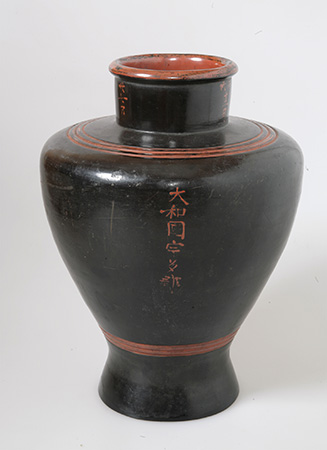
One out of two pieces in a pair
Inscribed 2nd year of Jōwa (1346)
Sōshamikumari Shrine, Nara
Photo Courtesy of the Cultural Property Section, Uda City Board of Education Secretariat
【To be shown over an entire period】
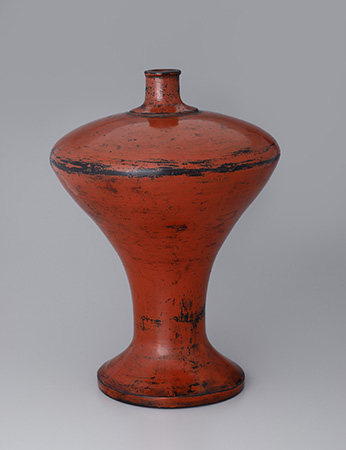
Suntory Museum of Art
【To be shown over an entire period】
Section 2
Negoro and Its Context
We cannot mention negoro without discussing Negoro-ji Temple. Since its founding by Kakuban (1095–1143), a scholarly priest who trained on Mt. Kōya, this temple has been sacred ground for the Shingi Shingonshū sect of Buddhism. At its peak, immediately before Toyotomi Hideyoshi burned Negoro-ji down in 1585, its precincts were filled with several thousand temple buildings. According to the History of Japan by the Portuguese missionary Luís Fróis (1532–1597), “The temple buildings are the most immaculate and, being lavishly decorated and covered in gold, stand out as the most splendid among Japan’s Buddhist temples.” Negoro-ji, we can see, was considered the most splendid temple of its time.
The red and black lacquerwares introduced in this section are called negoro. Tradition tells us that vermillion lacquerware was produced at Negoro-ji. That temple was not, however, the only source. Around Japan’s medieval period, at about the same time that Negoro-ji was producing that lacquerware, vermillion lacquerware was being created in many other places as well. Tracing the history, we see that over the years, those wares’ use spread from religious rituals to everyday settings. In recent years, excavations of the site of the residential quarters at Negoro-ji, together with primary source materials such as documents preserving the sacred teachings or land sale certificates, have given us a glimpse of the temple and its surroundings.

One out of four pieces in two pairs
Circa 3rd year of Kanshō (1462)–8th year of Tembun (1539)
Mito Daishi Rokujizōji Temple, Ibaraki
Photo by Yamazaki Kenji
【On display between Dec. 17 and Jan. 12】
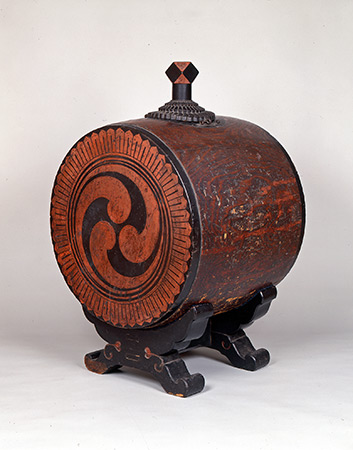
Inscribed 5th year of Bunmei (1473)
Sakai City Museum
【On display between Dec. 17 and Jan. 12】
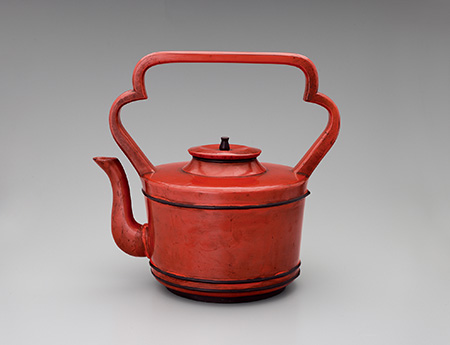
Suntory Museum of Art
【On display between Nov. 22 and Dec. 15】
Section 3
Yearned-for Negoro and New Terrain
Early in the Edo period, not long after Negoro-ji was burned down, vermillion lacquerware began being spoken of as negoro, and it continue to be influential in subsequent eras. That prestige led to research on collections of extant famous works and traditions, making copies of those works, and tracing historic transformations in negoro. The Illustrations of Famous Places in Kii Province (Kii no Kuni Meisho Zu-e), which dates from the latter half of the Edo period, states that vermillion lacquer bowls and trays used to be made in the Negoro-ji area. Meiji-period intellectuals, including Kurokawa Mayori and Takagi Josui, thoroughly explored the history of negoro.
The discovery of beauty in negoro rooted in daily life and the movement to appreciate it, coupled with the Mingei (Folk Craft) movement launched in 1926 by Yanagi Muneyoshi, Kawai Kanjirō, and Hamada Shōji, solidly established recognition of negoro’s beauty in the postwar period. Negoro does not serve merely as a utilitarian object or as a way of cherishing or admiring Negoro-ji. It is now regarded as craft art, an object of aesthetic appreciation. Today, negoro has again achieved sacred status, transcending its original uses or forms of appreciation to express, more purely, a spiritual world.
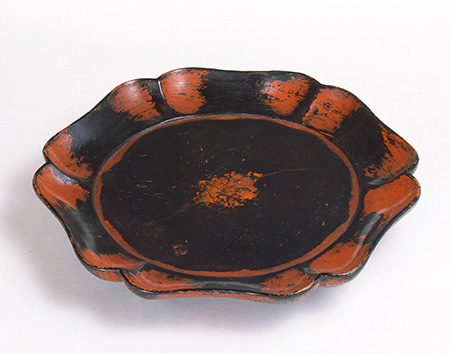
Kitamura Museum
【To be shown over an entire period】
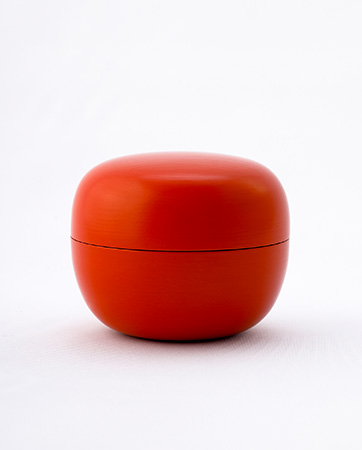
KURODA Tatsuaki (1904-1982)
Kagizen Yoshifusa, Kyoto
Photo by Ito Makoto
【To be shown over an entire period】
*Unauthorized reproduction or use of texts or images from this site is prohibited.
2025 January
- Exhibition
- Closed
- Tea Ceremony
- Mon
- Tue
- Wed
- Thu
- Fri
- Sat
- Sun
- 1
- 2
- 3
- 4
- 5
- 6
- 7
- 8
- 9
- 10
- 11
- 12
- 13
- 14
- 15
- 16
- 17
- 18
- 19
- 20
- 21
- 22
- 23
- 24
- 25
- 26
- 27
- 28
- 29
- 30
- 31
2025 February
- Exhibition
- Closed
- Tea Ceremony
- Mon
- Tue
- Wed
- Thu
- Fri
- Sat
- Sun
- 1
- 2
- 3
- 4
- 5
- 6
- 7
- 8
- 9
- 10
- 11
- 12
- 13
- 14
- 15
- 16
- 17
- 18
- 19
- 20
- 21
- 22
- 23
- 24
- 25
- 26
- 27
- 28
2025 March
- Exhibition
- Closed
- Tea Ceremony
- Mon
- Tue
- Wed
- Thu
- Fri
- Sat
- Sun
- 1
- 2
- 3
- 4
- 5
- 6
- 7
- 8
- 9
- 10
- 11
- 12
- 13
- 14
- 15
- 16
- 17
- 18
- 19
- 20
- 21
- 22
- 23
- 24
- 25
- 26
- 27
- 28
- 29
- 30
- 31
2025 April
- Exhibition
- Closed
- Tea Ceremony
- Mon
- Tue
- Wed
- Thu
- Fri
- Sat
- Sun
- 1
- 2
- 3
- 4
- 5
- 6
- 7
- 8
- 9
- 10
- 11
- 12
- 13
- 14
- 15
- 16
- 17
- 18
- 19
- 20
- 21
- 22
- 23
- 24
- 25
- 26
- 27
- 28
- 29
- 30
2025 May
- Exhibition
- Closed
- Tea Ceremony
- Mon
- Tue
- Wed
- Thu
- Fri
- Sat
- Sun
- 1
- 2
- 3
- 4
- 5
- 6
- 7
- 8
- 9
- 10
- 11
- 12
- 13
- 14
- 15
- 16
- 17
- 18
- 19
- 20
- 21
- 22
- 23
- 24
- 25
- 26
- 27
- 28
- 29
- 30
- 31
2025 June
- Exhibition
- Closed
- Tea Ceremony
- Mon
- Tue
- Wed
- Thu
- Fri
- Sat
- Sun
- 1
- 2
- 3
- 4
- 5
- 6
- 7
- 8
- 9
- 10
- 11
- 12
- 13
- 14
- 15
- 16
- 17
- 18
- 19
- 20
- 21
- 22
- 23
- 24
- 25
- 26
- 27
- 28
- 29
- 30
2025 July
- Exhibition
- Closed
- Tea Ceremony
- Mon
- Tue
- Wed
- Thu
- Fri
- Sat
- Sun
- 1
- 2
- 3
- 4
- 5
- 6
- 7
- 8
- 9
- 10
- 11
- 12
- 13
- 14
- 15
- 16
- 17
- 18
- 19
- 20
- 21
- 22
- 23
- 24
- 25
- 26
- 27
- 28
- 29
- 30
- 31
2025 August
- Exhibition
- Closed
- Tea Ceremony
- Mon
- Tue
- Wed
- Thu
- Fri
- Sat
- Sun
- 1
- 2
- 3
- 4
- 5
- 6
- 7
- 8
- 9
- 10
- 11
- 12
- 13
- 14
- 15
- 16
- 17
- 18
- 19
- 20
- 21
- 22
- 23
- 24
- 25
- 26
- 27
- 28
- 29
- 30
- 31
2025 September
- Exhibition
- Closed
- Tea Ceremony
- Mon
- Tue
- Wed
- Thu
- Fri
- Sat
- Sun
- 1
- 2
- 3
- 4
- 5
- 6
- 7
- 8
- 9
- 10
- 11
- 12
- 13
- 14
- 15
- 16
- 17
- 18
- 19
- 20
- 21
- 22
- 23
- 24
- 25
- 26
- 27
- 28
- 29
- 30
2025 October
- Exhibition
- Closed
- Tea Ceremony
- Mon
- Tue
- Wed
- Thu
- Fri
- Sat
- Sun
- 1
- 2
- 3
- 4
- 5
- 6
- 7
- 8
- 9
- 10
- 11
- 12
- 13
- 14
- 15
- 16
- 17
- 18
- 19
- 20
- 21
- 22
- 23
- 24
- 25
- 26
- 27
- 28
- 29
- 30
- 31
2025 November
- Exhibition
- Closed
- Tea Ceremony
- Mon
- Tue
- Wed
- Thu
- Fri
- Sat
- Sun
- 1
- 2
- 3
- 4
- 5
- 6
- 7
- 8
- 9
- 10
- 11
- 12
- 13
- 14
- 15
- 16
- 17
- 18
- 19
- 20
- 21
- 22
- 23
- 24
- 25
- 26
- 27
- 28
- 29
- 30
2025 December
- Exhibition
- Closed
- Tea Ceremony
- Mon
- Tue
- Wed
- Thu
- Fri
- Sat
- Sun
- 1
- 2
- 3
- 4
- 5
- 6
- 7
- 8
- 9
- 10
- 11
- 12
- 13
- 14
- 15
- 16
- 17
- 18
- 19
- 20
- 21
- 22
- 23
- 24
- 25
- 26
- 27
- 28
- 29
- 30
- 31
2026 January
- Exhibition
- Closed
- Tea Ceremony
- Mon
- Tue
- Wed
- Thu
- Fri
- Sat
- Sun
- 1
- 2
- 3
- 4
- 5
- 6
- 7
- 8
- 9
- 10
- 11
- 12
- 13
- 14
- 15
- 16
- 17
- 18
- 19
- 20
- 21
- 22
- 23
- 24
- 25
- 26
- 27
- 28
- 29
- 30
- 31
2026 February
- Exhibition
- Closed
- Mon
- Tue
- Wed
- Thu
- Fri
- Sat
- Sun
- 1
- 2
- 3
- 4
- 5
- 6
- 7
- 8
- 9
- 10
- 11
- 12
- 13
- 14
- 15
- 16
- 17
- 18
- 19
- 20
- 21
- 22
- 23
- 24
- 25
- 26
- 27
- 28
2026 March
- Exhibition
- Closed
- Mon
- Tue
- Wed
- Thu
- Fri
- Sat
- Sun
- 1
- 2
- 3
- 4
- 5
- 6
- 7
- 8
- 9
- 10
- 11
- 12
- 13
- 14
- 15
- 16
- 17
- 18
- 19
- 20
- 21
- 22
- 23
- 24
- 25
- 26
- 27
- 28
- 29
- 30
- 31
2026 April
- Exhibition
- Closed
- Mon
- Tue
- Wed
- Thu
- Fri
- Sat
- Sun
- 1
- 2
- 3
- 4
- 5
- 6
- 7
- 8
- 9
- 10
- 11
- 12
- 13
- 14
- 15
- 16
- 17
- 18
- 19
- 20
- 21
- 22
- 23
- 24
- 25
- 26
- 27
- 28
- 29
- 30
2026 May
- Exhibition
- Closed
- Mon
- Tue
- Wed
- Thu
- Fri
- Sat
- Sun
- 1
- 2
- 3
- 4
- 5
- 6
- 7
- 8
- 9
- 10
- 11
- 12
- 13
- 14
- 15
- 16
- 17
- 18
- 19
- 20
- 21
- 22
- 23
- 24
- 25
- 26
- 27
- 28
- 29
- 30
- 31
2026 June
- Exhibition
- Closed
- Mon
- Tue
- Wed
- Thu
- Fri
- Sat
- Sun
- 1
- 2
- 3
- 4
- 5
- 6
- 7
- 8
- 9
- 10
- 11
- 12
- 13
- 14
- 15
- 16
- 17
- 18
- 19
- 20
- 21
- 22
- 23
- 24
- 25
- 26
- 27
- 28
- 29
- 30
2026 July
- Exhibition
- Closed
- Mon
- Tue
- Wed
- Thu
- Fri
- Sat
- Sun
- 1
- 2
- 3
- 4
- 5
- 6
- 7
- 8
- 9
- 10
- 11
- 12
- 13
- 14
- 15
- 16
- 17
- 18
- 19
- 20
- 21
- 22
- 23
- 24
- 25
- 26
- 27
- 28
- 29
- 30
- 31
2026 August
- Exhibition
- Closed
- Mon
- Tue
- Wed
- Thu
- Fri
- Sat
- Sun
- 1
- 2
- 3
- 4
- 5
- 6
- 7
- 8
- 9
- 10
- 11
- 12
- 13
- 14
- 15
- 16
- 17
- 18
- 19
- 20
- 21
- 22
- 23
- 24
- 25
- 26
- 27
- 28
- 29
- 30
- 31
2026 September
- Exhibition
- Closed
- Mon
- Tue
- Wed
- Thu
- Fri
- Sat
- Sun
- 1
- 2
- 3
- 4
- 5
- 6
- 7
- 8
- 9
- 10
- 11
- 12
- 13
- 14
- 15
- 16
- 17
- 18
- 19
- 20
- 21
- 22
- 23
- 24
- 25
- 26
- 27
- 28
- 29
- 30
2026 October
- Exhibition
- Closed
- Mon
- Tue
- Wed
- Thu
- Fri
- Sat
- Sun
- 1
- 2
- 3
- 4
- 5
- 6
- 7
- 8
- 9
- 10
- 11
- 12
- 13
- 14
- 15
- 16
- 17
- 18
- 19
- 20
- 21
- 22
- 23
- 24
- 25
- 26
- 27
- 28
- 29
- 30
- 31
2026 November
- Exhibition
- Closed
- Mon
- Tue
- Wed
- Thu
- Fri
- Sat
- Sun
- 1
- 2
- 3
- 4
- 5
- 6
- 7
- 8
- 9
- 10
- 11
- 12
- 13
- 14
- 15
- 16
- 17
- 18
- 19
- 20
- 21
- 22
- 23
- 24
- 25
- 26
- 27
- 28
- 29
- 30
2026 December
- Exhibition
- Closed
- Mon
- Tue
- Wed
- Thu
- Fri
- Sat
- Sun
- 1
- 2
- 3
- 4
- 5
- 6
- 7
- 8
- 9
- 10
- 11
- 12
- 13
- 14
- 15
- 16
- 17
- 18
- 19
- 20
- 21
- 22
- 23
- 24
- 25
- 26
- 27
- 28
- 29
- 30
- 31
